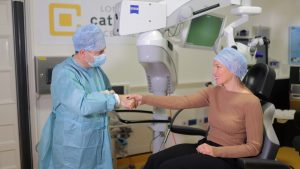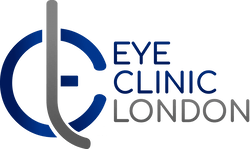What to Expect During and After ICL Surgery: A Step-by-Step Guide

If you’re considering Implantable Collamer Lens (ICL) surgery to correct your vision, you’re not alone. Thousands of people in the UK are now turning to ICL as an alternative to glasses, contact lenses, and even laser eye surgery. And it’s no surprise—ICL has come a long way, offering a permanent, reversible solution with crisp, sharp vision and minimal downtime.
In this guide, I’ll walk you through exactly what happens before, during, and after ICL surgery. From the preoperative assessments to long-term visual results, this is your all-in-one roadmap for understanding the full ICL experience.
Understanding ICL Surgery: What Is It Exactly?
Before we get into the steps, let’s quickly cover what ICL surgery is. In simple terms, an ICL is a soft, flexible lens that’s implanted inside your eye, between the iris (the coloured part) and your natural lens. Unlike LASIK or PRK, which reshape your cornea, ICL adds a lens inside your eye to correct your vision—without removing any tissue.
It’s especially popular among people with high degrees of short-sightedness (myopia), thin corneas, or dry eyes—groups that aren’t always good candidates for laser procedures.
The procedure is quick, painless, and typically done under local anaesthesia. Best of all, the lens is removable if needed, so you’re not making a one-way commitment.
Preoperative Assessments: Laying the Groundwork
The first major step in your ICL journey is the preoperative assessment. This isn’t just a quick eye test; it’s a comprehensive evaluation to determine whether you’re a suitable candidate. It can take up to two hours, and every detail matters.
Detailed Eye Measurements
Expect several diagnostic tests. These include:
- Pachymetry: Measuring the thickness of your cornea.
- Anterior chamber depth: This is crucial to ensure there’s enough space to accommodate the ICL.
- Endothelial cell count: These cells are vital for keeping your cornea clear. If your count is low, you may not qualify for the procedure.
These measurements help in customising the lens to your eye’s exact specifications. Precision here is key—millimetres matter.
Vision Stability and Prescription History
Another important consideration is the stability of your prescription. If your eyesight has changed significantly in the past year, your surgeon may advise waiting until it stabilises.
General Health and Medication Review
You’ll also be asked about your general health, medications, and any previous eye conditions. Some systemic illnesses and drugs may affect your eligibility or healing post-surgery.
The Customisation Phase: Tailoring Your Vision

Once you’re confirmed as a candidate, your ICL lens will be custom-made to suit your exact needs. This part takes time—usually about 2 to 3 weeks—so there’s a short waiting period before your surgery date is scheduled.
Choosing the Right ICL Type
There are two primary ICL models available:
- Non-toric ICLs: For those without astigmatism.
- Toric ICLs: Designed to correct astigmatism as well as myopia.
Your ophthalmologist will decide which version suits you best. The aim is to achieve the most natural and high-definition vision possible.
The Day of the Surgery: What Really Happens
Now we come to the big day—ICL implantation. The good news? It’s a lot less daunting than most people imagine.
Arrival and Anaesthetic
You’ll be asked to arrive at the clinic an hour or so before the procedure. You’ll get some dilating eye drops, and a local anaesthetic will be administered to numb your eyes. Sedation may be offered if you’re particularly anxious, but general anaesthesia isn’t needed.
The Procedure Step-by-Step
The surgery itself takes about 20 to 30 minutes per eye. Here’s what happens:
- Small Incision: A tiny incision is made at the edge of your cornea—usually self-healing and no stitches required.
- Lens Insertion: The ICL is inserted using a special injector and unfolds inside the eye.
- Positioning: The lens is carefully positioned behind the iris and in front of your natural lens.
- Final Check: The surgeon checks for correct positioning and may use eye drops to constrict the pupil, locking the lens in place.
Most patients are surprised at how quick and painless the process is. There’s no cutting into the iris or removing your natural lens, which helps with faster recovery.
Immediate Post-Surgery: The First 24 Hours
Once the procedure is over, you’ll spend a short time in recovery. You won’t be able to drive home, so make sure someone accompanies you.
Vision Right After Surgery
Expect your vision to be hazy or cloudy for the first few hours. Your eye may also feel slightly gritty or watery. This is entirely normal. Many people report improved vision even on the same day, but don’t worry if it takes a bit longer—it varies.
What to Avoid
Your surgeon will advise you to:
- Avoid touching or rubbing your eyes
- Steer clear of bright lights
- Use prescribed antibiotic and anti-inflammatory drops regularly
Follow-up is typically scheduled for the very next day to ensure the lens is correctly positioned and the eye is healing well.
The Recovery Phase: Days to Weeks
Here’s where things start to settle. Your vision begins to stabilise, and your eyes adjust to the new lenses.
Week One: Adjusting to the New Normal
By the end of the first week, many patients report seeing clearly enough to work, read, and go about most daily activities. However, night vision may still be a little off—some people notice halos or glare around lights at night.
Follow-Up Appointments
Your ophthalmologist will schedule a few more follow-ups in the weeks ahead to monitor:
- Intraocular pressure
- Lens positioning
- Healing of the incision site
- Endothelial cell health
These visits are crucial to catch any complications early.
Possible Side Effects and How They’re Managed
Like any medical procedure, ICL surgery does come with risks. But knowing what to expect helps you prepare mentally and practically.
Common Side Effects
- Halos or glare at night: Usually temporary and fade over time.
- Dry eyes: Less common than with LASIK, but may still occur.
- Inflammation or redness: Managed with anti-inflammatory drops.
- Increased eye pressure: Monitored during follow-ups.
Rare Complications
In rare cases, you might experience cataract formation or the need to reposition the lens. That’s why regular check-ups are non-negotiable.
The good news? Most side effects are manageable and temporary. Complication rates are very low when surgery is performed by an experienced ophthalmic surgeon.
Vision Stabilisation Timeline: When Will I See Clearly?

You’re probably wondering how long it takes to achieve final results. While everyone heals differently, here’s a general guide:
- Day 1: Noticeable improvement, but slightly hazy
- Week 1: Clearer vision with minor fluctuations
- 1 Month: Majority of patients reach stable, crisp vision
- 3-6 Months: Final vision result and visual adaptation complete
Most patients achieve 20/20 vision or better without glasses. Some even describe their vision as being “better than glasses ever gave them.”
Long-Term Results and Maintenance
So, how long does ICL last? The answer is—potentially, for life. The lens is designed to stay in place indefinitely, but it can be removed or replaced if needed.
Longevity and Satisfaction
Studies show very high patient satisfaction rates, with many saying they would undergo the surgery again in a heartbeat. The ICL doesn’t degrade over time and doesn’t need replacing unless a problem arises.
Annual Eye Exams
Even if your vision feels perfect, it’s important to have your eyes checked annually. Your ophthalmologist will continue to monitor your eye pressure and lens stability.
Cost Considerations and Value for Money
ICL surgery is a significant investment, and it’s important to understand what you’re paying for. Prices in the UK typically range from £3,000 to £4,500 per eye, depending on the clinic, surgeon experience, and whether your procedure includes a toric lens to correct astigmatism. While this might seem expensive compared to glasses or contacts, it’s worth considering the long-term savings and convenience.
When you factor in the ongoing cost of lenses, solutions, regular optician visits, and potential issues like dry eyes or lens intolerance, ICL can actually prove more cost-effective over time. Moreover, you’re also investing in lifestyle freedom—clear vision during sports, travel, or daily activities without constantly managing eyewear. Most patients describe the procedure as “life-changing,” and satisfaction rates remain exceptionally high years after surgery. If you’re eligible and prepared, the value of ICL surgery often goes far beyond the upfront cost.
Who Should Not Have ICL Surgery?
Although it’s suitable for many, ICL isn’t for everyone.
You may not be a good candidate if:
- You have very shallow anterior chambers
- You have a low endothelial cell count
- You suffer from uncontrolled glaucoma
- Your prescription is still changing rapidly
Your surgeon will explain your options and might suggest alternatives like LASIK or Refractive Lens Exchange (RLE) instead.
Comparing ICL to LASIK and Other Vision Correction Options
If you’re weighing up your options for vision correction, you’re probably wondering how ICL compares to LASIK, PRK, or even Refractive Lens Exchange (RLE). While all of these procedures aim to reduce or eliminate your dependence on glasses or contact lenses, the way they work—and who they’re best suited for—differs quite a bit.
ICL is unique because it doesn’t involve reshaping the cornea or removing any part of your natural lens. This makes it ideal for patients with thin corneas, high levels of short-sightedness, or those prone to dry eye syndrome. Unlike LASIK, which is permanent and not reversible, ICL offers flexibility—the lens can be removed or replaced if needed later in life. On the other hand, RLE is more suitable for patients over 45 who are starting to develop presbyopia or early lens changes. So, if you’re under 40, have a stable prescription, and want high-definition vision without altering your eye’s structure, ICL may offer the best long-term value.
FAQs About ICL Surgery
- Is ICL surgery painful?
No, ICL surgery is not painful. The procedure is done under local anaesthetic, which numbs your eye completely. You may feel slight pressure or coolness from the eye drops, but there is no pain during the surgery itself. Some mild discomfort or scratchiness may be noticed in the hours following the procedure, but this typically resolves quickly with prescribed eye drops and rest. - How long do the results of ICL surgery last?
ICL lenses are designed to be permanent and can last a lifetime. They don’t degrade or wear out over time. However, your natural lens may eventually develop cataracts as part of the normal ageing process, which would then require cataract surgery. Until then, most patients enjoy stable, long-term vision with no need for glasses or contact lenses. - Can both eyes be treated on the same day?
In many cases, both eyes are treated on the same day, with a short gap between procedures. However, some surgeons prefer to do one eye at a time—often 24 to 48 hours apart—to allow monitoring of the first eye’s response. The approach depends on your surgeon’s clinical judgement and your personal comfort with the process. - What is the ideal age for ICL surgery?
Most candidates for ICL surgery are between 21 and 45 years of age. It’s essential that your prescription has been stable for at least 12 months before proceeding. While there is no strict upper age limit, people over 45 may be better suited to other procedures such as Refractive Lens Exchange (RLE), especially if presbyopia is already developing. - Are there any activities I should avoid after surgery?
Yes, you’ll need to avoid strenuous activity, swimming, dusty environments, and rubbing your eyes for at least a week. Heavy lifting and contact sports should be put on hold for a little longer—typically two to four weeks—depending on your recovery progress. Your surgeon will give you a specific timeline based on how well your eye is healing. - Will I need glasses after ICL surgery?
Most patients do not require glasses for distance vision after ICL surgery. However, if you’re over 40, you may still need reading glasses for close-up tasks due to natural age-related changes in the lens (presbyopia). For younger patients, the aim is complete freedom from corrective eyewear for most daily activities. - Is ICL suitable for people with thin corneas?
Yes, ICL is often the preferred solution for people with thin or irregular corneas who are not suitable candidates for LASIK or PRK. Since the cornea remains untouched in ICL surgery, the structural integrity of your eye is preserved, making it a safer long-term choice in these cases. - What are the risks associated with ICL surgery?
Although rare, some risks include increased intraocular pressure, inflammation, cataract development, or the need for lens repositioning. Most of these complications are manageable if detected early, which is why attending all follow-up appointments is crucial. The safety profile of ICL is excellent when performed by a qualified surgeon. - Can I have an MRI after getting ICL lenses?
Yes, ICL lenses are made of a biocompatible material that is MRI-safe. You should always inform your healthcare provider that you have an implantable lens before undergoing any scans, but modern ICL materials are not affected by magnetic fields and do not interfere with imaging. - What if my vision changes years after ICL surgery?
If your vision changes significantly in the years following ICL surgery—due to age, hormonal shifts, or eye conditions—the lens can be removed or exchanged. The reversibility of ICL is one of its major advantages, providing flexibility for future vision correction needs as they arise.
Final Thoughts: Is ICL Right for You?
ICL surgery offers a safe, reversible, and highly effective alternative to laser vision correction. With short recovery time and high-definition visual results, it’s becoming the procedure of choice for people with moderate to high myopia, astigmatism, or unsuitable corneas for LASIK.
If you’re looking for sharp vision, fewer dry eye issues, and a permanent fix that doesn’t alter your eye’s structure, ICL could be a life-changing option. Just make sure you’re working with a highly experienced surgeon and that you follow all pre- and post-op advice.
At Eye Clinic London, our team specialises in private ICL surgery in London and offers a thorough consultation process to help you decide if it’s the right path for your vision needs. From diagnostics to aftercare, you’ll be in expert hands every step of the way.
Take your time, ask all the questions, and remember—vision is too important to rush.
References
- Sanders, D.R., Vukich, J.A., Doney, K. and Gaston, M. (2003) U.S. Food and Drug Administration clinical trial of the implantable Collamer Lens for moderate to high myopia. Ophthalmology, 110(2), pp. 255–266. Available at: https://pubmed.ncbi.nlm.nih.gov/12578765/ [Accessed 29 June 2025].
- Kamiya, K., Shimizu, K., Ando, W., Igarashi, A., Hikita, F. and Komatsu, M. (2009) Four‑year follow‑up of posterior chamber phakic intraocular lens implantation for moderate to high myopia. Archives of Ophthalmology, 127(7), pp. 845–850. Available at: https://www.ncbi.nlm.nih.gov/pmc/articles/PMC5741871/ [Accessed 29 June 2025].
- Pérez‑Vives, C., Ferrer‑Blasco, T., Domínguez‑Vicent, A., García‑Lázaro, S. and Montés‑Micó, R. (2014) Implantable Collamer Lens and femtosecond laser for myopia: comparison using an adaptive optics visual simulator. Arquivos Brasileiros de Oftalmologia, 77(2), pp. 103–109. Available at: https://www.scielo.br/j/abo/a/m73wkdhGML9mxprDHnSFwVb/?format=pdf&lang=en [Accessed 29 June 2025].
- Bhandari, V. (2015) Implantable Collamer Lens V4b and V4c for correction of high myopia. Journal of Current Ophthalmology. Available at: https://www.academia.edu/42350952/Effect_of_central_hole_location_in_phakic_intraocular_lenses_on_visual_function_under_progressive_headlight_glare_sources [Accessed 29 June 2025].
- European Society of Cataract and Refractive Surgeons (ESCRS) (2019) Meta‑analysis and review: effectiveness, safety, and central port design of the EVO‑ICL. Clinical Ophthalmology. Available at: https://www.ncbi.nlm.nih.gov/pmc/articles/PMC4907705/ [Accessed 29 June 2025].

